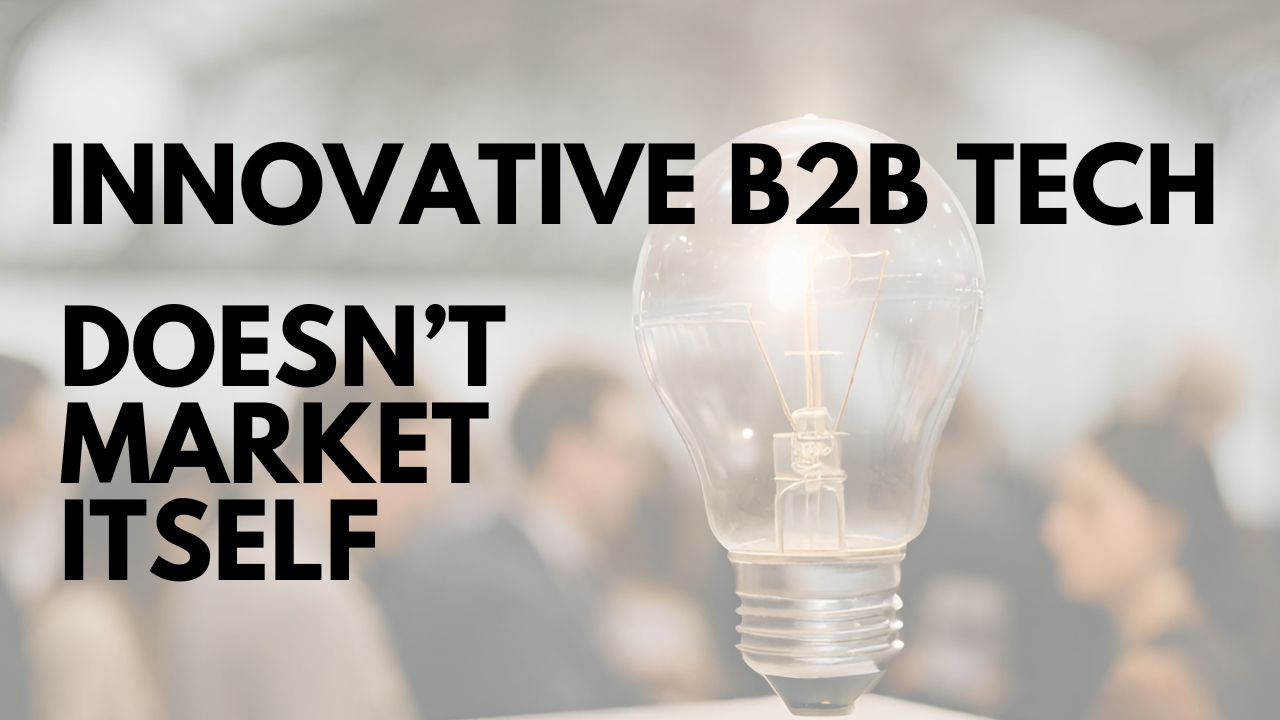Innovative B2B offerings, whether they are tech devices, software or systems, are not immune to the laws of the market simply because of their pioneering or individual nature.
This applies if you are selling – as clients of mine have – a telemeter for logistics, a healthcare ERP, workplace safety data sheets, a digital simulation for heavy industry, or an IT recruitment system.
Here are three marketing positions I observe smaller, often tech-driven, B2B companies put themselves into when promoting their innovations. I’m sure they get sales, but they could do better.
Your mission is not their problem.
As an evangelist for your innovative B2B tech, you’ve probably got the mission statement on the home page, the company’s LinkedIn page and across all your sales collateral. Whilst heartfelt mission statements have their place, frankly it is not your customers’ primary buying decision.
“Nobody is going to tell you that your idea is bad. I’m reminded of the quote from movie critic Pauline Kael, who said that Hollywood is the only place where you can die from too much encouragement. This can also be applied to situations where you may wonder why people think your product is a great idea but no one is buying it.”
As with all B2B marketing, it is easier to sell a new device if you can overcome an old customer problem first.
Discuss cost vs value, not just impact.
This is related to my first point. If you’re a tech founder with an innovative medical device or a logistics tracking device or a piece of software, it can be very easy to allow your marketing to focus on your awesome idea. Let’s call it the “ A Better World” campaign.
You should have this as part of your marketing mix because it’s true and it’s a fantastic thing to say. But those products/services still need to be bought and budgeted for by buyers less concerned about your 50,000-foot strategy. It seems that many B2B companies find it difficult to square away the “A Better World” campaign with a more commercial, down-to-earth campaign. Bringing up strictly commercial considerations such as cost versus value is one way of achieving a balance.
Show growth and sales, not just industry conferences.
I encourage clients to use LinkedIn posts and business blogs as the ideal platforms to show monthly and annual growth or some other kind of movement towards business goals in real-time. Portraying an environment of success shows potential customers and investors that they’re taking less of a risk and joining something positive.
Instead, many B2B companies reduce these platforms to a series of social snaps and shout-outs from industry events, conferences and trade shows, name-checking the conference organizers on the valuable first line of their LinkedIn posts.
Whilst a few social selling pictures of the team standing around on the first/last day may be acceptable, there are just so many better and more direct ways to use this opportunity to sell the product. It’s frustrating to see a B2B team return from an overseas conference without a single decent photo of their event stand being busy with customers or a review of how the experience is a learning or growing experience for the team.
